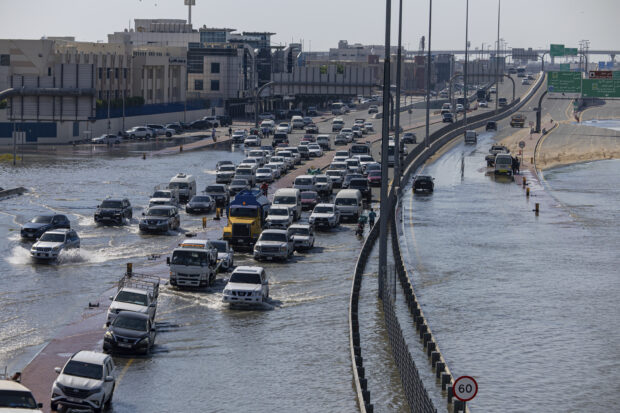Global insured losses from natural catastrophes totaled $60 billion during the first half of 2024, or 62 percent above the 10-year average, according to preliminary estimates from Swiss Re.
Severe thunderstorms, mainly in the U.S., accounted for 70 percent of insured losses globally, or US$42 billion, which is 87% higher than the 10-year average, said Swiss Re, adding that the first half of 2024 marked the second costliest on record for insured losses from these so-called severe convective storms. (SCS are characterized by strong winds including tornadoes, hail and heavy rain.)
In the U.S., 12 storms each caused losses of $1 billion or more, demonstrating the loss potential of this peril, said Swiss Re, noting that insured losses from SCS in the US have increased annually by around 8 percent in nominal terms since 2008.
Extreme Weather Sends Insured Losses 70% Above Historical Norms
In its recent nat cat report, Munich Re estimated H1 global insured losses were US$62 billion, significantly higher than the 10-year average of US$37 billion. For SCS in the US, Munich Re said, H1 2024 is currently the fourth-costliest year in terms of severe thunderstorm losses in the US, costing insurers more than US$34 billion.
Economic and Man-made Losses
Swiss Re estimated H1 economic losses from natural catastrophes of $120 billion, compared with $152 billion in H1 2023. (Economic losses include both insured and uninsured losses).
Insured losses from man-made catastrophes during the first six months were estimated by Swiss Re to total $6 billion, up from $5 billion in H1 2023. During the first half, economic losses from man-made disasters totaled $7 billion, compared with $6 billion during the same period last year.
Flood Losses
Another major contributor to losses during H1 2024 were floods in the United Arab Emirates, Germany and Brazil. Swiss Re pointed to the “unprecedented damage” in the UAE from flash floods in April, which cost insurers at least $2 billion – a record amount. “While heavy rainfall is expected to increase in a warmer climate, swift urban growth, land use alteration, scarce drainage systems, and dry soils intensify loss severity,” Swiss Re said.
“In recent years, severe thunderstorms have emerged as a main driver of a significant increase in insured losses,” commented Balz Grollimund, head of Catastrophe Perils at Swiss Re. “This is due to growing populations and higher property values in urban areas, along with insured property being more vulnerable to hail damage. Therefore, multi-billion-dollar loss events from this peril are likely to become more common.”
“Insured losses from severe thunderstorms have been growing due to a mix of factors including inflation, which has contributed to rising construction costs. And, with economic development, overall exposures will continue to increase,” according to Jérôme Jean Haegeli, Swiss Re’s group chief economist. “That’s why investing in protective measures – such as shielding vulnerable communities from floods or improving building codes to protect homes from severe hailstorms – is vital.”
Note: Swiss Re said its total for the H1 10-year average refers to average H1 losses between 2014 and 2023. Some totals may not correspond with the sum of the separate figures due to preliminary totals and rounding.
Source: Swiss Re Institute
Photograph: Vehicles drive through standing floodwater caused by heavy rain in Dubai, United Arab Emirates, on Thursday, April 18, 2024. (AP Photo/Christopher Pike)




















 What Happened to the Hurricanes? CSU Forecasts September ‘Quiet Period’
What Happened to the Hurricanes? CSU Forecasts September ‘Quiet Period’  The High Cost of Negative Consumer Perception
The High Cost of Negative Consumer Perception  Underwriters Wary of PFAS Amid ‘Superstorm’ of Litigation, Regulation
Underwriters Wary of PFAS Amid ‘Superstorm’ of Litigation, Regulation  Main Street America Insurance Exits Personal Lines
Main Street America Insurance Exits Personal Lines 




